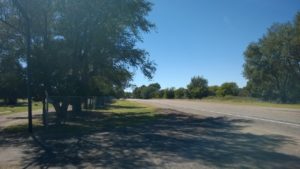I want to get off my criticism bandwagon for a moment and toss a bouquet at the Texas Parks & Wildlife Department for celebrating a landmark anniversary.
Its state parks system is turning 100 years old. Texas Highways, the state travel magazine to which I subscribe, noted the anniversary in its latest issue.
My late wife was a huge fan of the state parks system. So am I. We once figured we visited about two-thirds of the state’s 90-plus state parks during the past four decades in Texas. We usually would haul our RV to a site and camp there for a few days, enjoying the varied hiking trails and wildlife that occasionally would visit our campsites.
I do not have a “favorite” state park, given that they all present unique charms. To single one out as a favorite would do an injustice to all the other parks I have visited.
I will say, though, that Mother Neff State Park near Waco — by far! — has the cleanest restrooms and public showers of any we have seen. That’s all I will say about that.
Lord knows I have been critical of Texas government during the nearly 40 years I have lived here. I will sing TP&W’s praises for the state park system it has developed and nurtured for as long as I am able.
Well done, TP&W.


